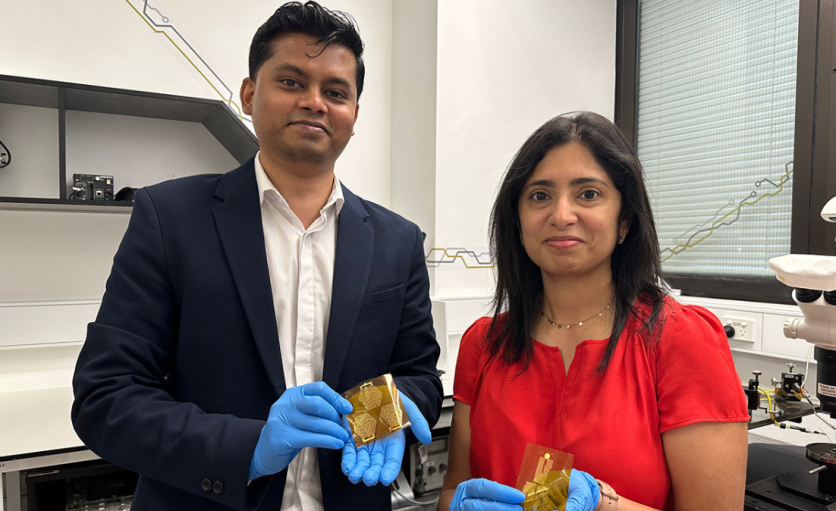All over the world, cardiovascular problems are one of the leading causes of death. Across many communities, healthcare workers use electrocardiogram (ECG) sensors to monitor the heart of the patients.
A group of researchers from RMIT University in Australia have come up with a special type of waterproof ECG sensor that minimizes skin irritation, making it comfortable to wear for patients.
Elevating ECG Sensor Technology

Traditionally, ECG sensors feature electrodes placed on specific areas of the body, most commonly the chest. These sensors capture the heart's electrical impulses during contraction and relaxation cycles, rendering this electrical activity into graphical representations that offer crucial insights into cardiac health.
ECG sensors have a wide range of applications. They can be used to monitor the heart conditions of patients, as well as assess if the treatment given is effective.
Nowadays, modern smartwatches have ECG sensors, paving the way for easier detection of health metrics. This easily makes smartwatches a must-grab for people who want to track their fitness level.
The Quest for Enhanced Design and Comfort
According to Interesting Engineering, the RMIT University team embarked on a mission to redefine ECG sensor technology by improving electrode design and materials.
The objective was to create a sensor that not only delivered superior performance but also elevated the comfort of the user.
The result is a remarkably lightweight ECG sensor, weighing a mere 10 grams, in stark contrast to the standard weight of several hundred grams for conventional devices. However, the real innovation lies in its gel-free design, a groundbreaking feature that significantly reduces the risk of skin irritation, a common concern with wet electrodes.
Related Article : New Antibiotic Molecule Reveals How to Halt Bacterial Growth Without Harming Human Cells
Pioneering Gel-Free Dry Electrodes
The gel-free ECG sensor stands out with its dry electrodes, which are minuscule, measuring less than one-tenth the width of a human hair. Despite their size, these electrodes exhibit remarkable sensitivity to the user's cardiac impulses.
Moreover, the team conducted experiments to gauge the sensor's efficiency. In comparative tests against a 12-electrode wearable monitor available in the market, this new device impressively recorded heart activity under various conditions, including rest and stress.
Remarkably, it can capture ECG readings even when positioned behind the user's neck, making it a promising tool for applications in elderly care.
Peter Elango, lead author and PhD scholar, highlights the advantages of dry electrodes.
"Dry electrodes prioritize user comfort, remain durable over time, and reduce the likelihood of skin irritation," Elango said.
He explained that these electrodes are hydrophobic, meaning they don't get wet, enabling users to wear the device while engaging in water-based activities like swimming and showering. These attributes make this sensor ideal for continuous monitoring, a pivotal feature for wearable ECG devices.
Preventing Heart Attacks with Continuous Monitoring
This innovative ECG sensor holds the potential to revolutionize heart health, particularly in remote healthcare and ambulatory care settings. Heart attacks often occur suddenly, with subtle or undetectable warning signs. Continuous monitoring becomes critical for early detection and prevention.
Elango's vision to avoid heart attacks in patients is clear. He wanted to ensure that early detection would work so those individuals prone to cardiovascular diseases could see a glimmer of hope.
The team has taken a significant step forward by filing an international patent (PCT) application. RMIT University is actively exploring avenues to transform this groundbreaking work into a commercial product, engaging in discussions with potential licensing partners.
The pioneering development of this revolutionary ECG sensor has been documented in the journal Applied Physics Reviews.

ⓒ 2025 TECHTIMES.com All rights reserved. Do not reproduce without permission.




